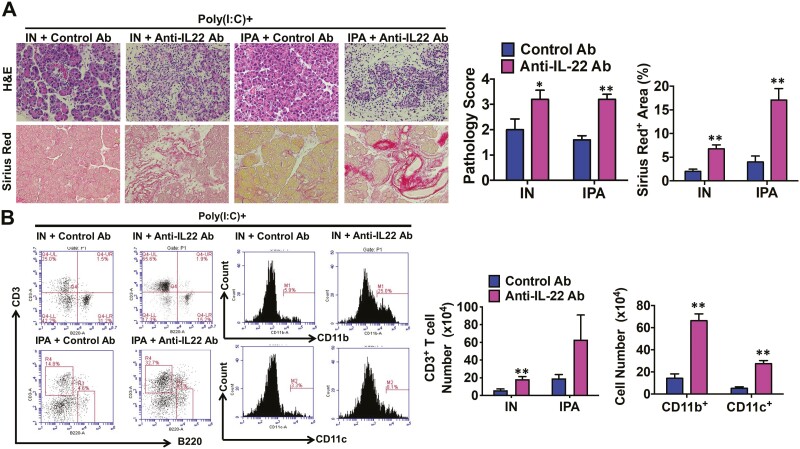Figure 4.
Suppression of experimental autoimmune pancreatitis by indigo naturalis or indole-3-pyruvic acid depends on IL-22. Four groups of mice that received intraperitoneal injections of polyinosinic-polycytidylic acid (poly(I:C)) were used (n = 5 per group). Two groups were also treated with 4% indigo naturalis (IN), and two other groups received 0.1% indole-3-pyruvic acid (IPA) in the diet. Finally, one group on the same diet received an intraperitoneal injection of an anti-IL-22 Ab (n = 5), whereas the other group on the same diet was treated with a control Ab (n = 5). Injections of poly(I:C) (100 μg) were performed twice a week for a total of 16 times, and the mice were sacrificed 3 h after the final injection. (A) Representative images of pancreatic sections stained with hematoxylin and eosin (H&E) or Sirius Red are shown in the left panel (magnification ×400). Pathological scores for autoimmune pancreatitis and areas occupied by pancreatic fibrosis derived from the analyses of H&E and Sirius Red staining, respectively, are illustrated in the right panel. (B) Flow cytometry analyses of the percentages and numbers of pancreatic CD3+ T, CD11b+, and CD11c+ cells. Data on CD11b+ and CD11c+ cells were from mice treated with poly(I:C) and/or IN. Results are shown as the mean + standard error. *P < 0.05, **P < 0.01, as compared with values in mice treated with a control Ab

